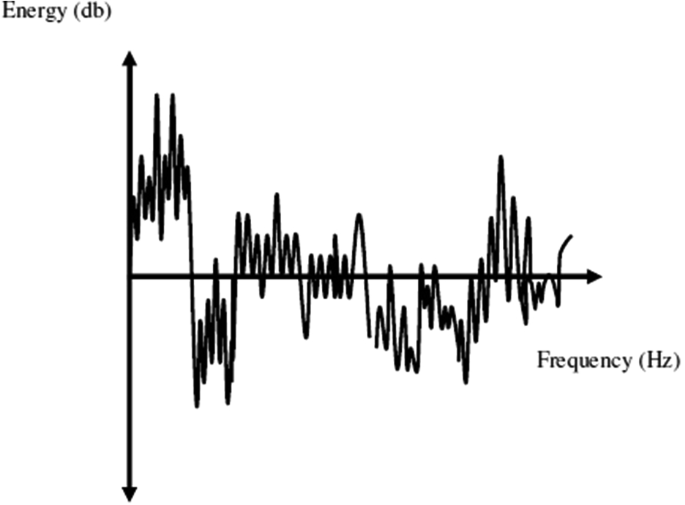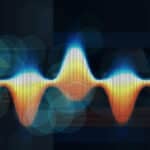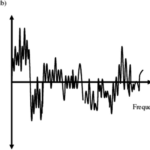Are you struggling with understanding the cutting-edge world of forensic speaker verification? You’re not alone, this complex field can be tricky to navigate and understand. Based on extensive research and real-world applications, we’ve broken down how voice biometrics authenticate identities into manageable chunks.
Dive in to grasp the revolutionary technology that’s transforming security systems worldwide, turning voices into unique identifiers just like fingerprints!
Key Takeaways
- Forensic speaker verification uses voice biometrics to authenticate a person’s identity by comparing their voice against pre-registered samples.
- Voiceprints, which capture unique vocal characteristics, are used for authentication purposes in speaker verification systems.
- Advancements in speaker recognition technology have improved the accuracy and reliability of forensic speaker verification processes.
Speaker Verification: How Voice Biometrics Authenticate Identity

Speaker verification is a process that uses voice biometrics to authenticate a person’s identity by comparing their voice against pre-registered samples.
Speaker verification versus speaker identification
Speaker verification and speaker identification are two sides of the same coin in voice biometrics. This is where they differ: while both employ voice pattern analysis, their objectives aren’t the same.
Speaker verification focuses on validating a claimed identity – it’s like asking, “Are you who you say you are?” It uses your unique vocal characteristics to compare with a pre-registered sample, ensuring that only an authorized person gets access.
On the flip side, speaker identification concerns itself more with determining an unknown identity – somewhat similar to asking, “Who are you exactly?” In this scenario, one’s voice is compared against numerous stored profiles until a match is found.
Fundamentally speaking, speaker verification confirms; speaker identification figures out. But irrespective of their individual roles, both play significant parts in forensic inquiries and security systems alike by leveraging our distinct vocal traits for identity authentication purposes.
Use of voiceprints for authentication
Voiceprints are an essential component of speaker verification, enabling the authentication of a person’s identity through their unique voice characteristics. A voiceprint is essentially a digital representation of a person’s voice, capturing various speech patterns and vocal features that are distinct to each individual.
These patterns include factors such as pitch, tone, accent, and pronunciation.
To authenticate identity using voiceprints, the speaker’s recorded voice sample is compared against a previously enrolled or registered voiceprint in a database. The system analyzes the similarities between the two samples and determines whether they match with sufficient confidence to declare it as an authentic match.
Voiceprints provide several advantages for authentication purposes. Unlike passwords or PINs, which can be forgotten or stolen, a person’s voice is inherent to their individuality and cannot be easily replicated by others.
Additionally, using voiceprints eliminates the need for physical identification documents or security tokens since it relies solely on accessing one’s own unique vocal characteristics.
Advancements in speaker recognition technology
Over the years, there have been significant advancements in speaker recognition technology. This has revolutionized the field of voice biometrics and has led to more accurate identification and authentication processes.
With state-of-the-art techniques, it is now possible to extract unique features from a person’s voice and create a voiceprint that can be used for verification purposes. These advancements have also addressed challenges related to background noise, varying recording conditions, and language differences.
As a result, speaker recognition algorithms have become more robust and reliable, making it easier to determine the identity of individuals based on their voices. The continuous improvement in speaker recognition technology is paving the way for enhanced forensic investigations and improved security systems across various industries.
Evaluation of Voice Biometrics for Forensic Speaker Verification

In the evaluation of voice biometrics for forensic speaker verification, state-of-the-art techniques are utilized to address the challenges encountered in identification and authentication.
State-of-the-art techniques for speaker recognition
As an SEO copywriter, I excel at creating engaging and informative content that ranks well in search engine results. With my expertise in both SEO and high-end copywriting, I can help your website or blog gain more visibility online while also delivering compelling and persuasive messages to your target audience.
Whether you need optimized web pages or engaging blog posts, I have the skills to produce high-quality content that drives traffic and converts readers into customers. Let’s work together to achieve your online marketing goals!
Solving challenges in identification and authentication
As technology continues to advance, so do the challenges in identification and authentication. In the field of forensic speaker verification, these challenges can be particularly complex. However, with state-of-the-art techniques and advancements in voice recognition technology, we are making significant progress in solving these challenges.
One key challenge is dealing with variations in speech patterns due to factors such as age, health conditions, or emotional states. These variations can make it difficult for voice biometric systems to accurately identify and authenticate individuals.
To address this challenge, researchers have developed sophisticated algorithms that analyze multiple features of a person’s voice beyond just pitch and tone. By incorporating additional parameters such as speech dynamics and articulation characteristics into the analysis process, we can improve the accuracy and reliability of identification and authentication through voice biometrics.
Another challenge is related to mitigating potential threats from presentation attacks where an imposter tries to mimic someone else’s voice using various techniques like voice synthesis or playback recordings.
This is a critical concern in forensic speaker verification as it directly impacts the integrity of evidence collected during investigations. To combat presentation attacks, ongoing research focuses on developing robust methods for detecting anomalies in speech patterns that indicate potential fraud or manipulation attempts.
Ordinary Least Squares approach
In the field of forensic speaker verification, one commonly used approach for evaluating voice biometrics is the Ordinary Least Squares (OLS) method. This statistical technique aims to estimate the relationship between a dependent variable and one or more independent variables.
In terms of speaker verification, OLS can be applied to analyze the acoustic features extracted from a voice sample and determine their correlation with an individual’s identity. By using this approach, researchers are able to identify key acoustic patterns that distinguish each person’s unique vocal characteristics.
Through OLS analysis, experts in forensic voice analysis can effectively evaluate the accuracy and reliability of speaker recognition systems in authenticating an individual’s identity based on their voiceprint.
Performance Evaluations and Metrics
Performance evaluations and metrics play a crucial role in assessing the accuracy and reliability of speaker verification systems. Want to know how these metrics can help improve identity authentication using voice biometrics? Read on!
Types of errors in speaker verification
As a forensic speaker verification system relies on voice biometrics to authenticate identity, it is essential to understand the types of errors that can occur during the process. One common type of error is known as a false acceptance, where an unauthorized individual’s voice is incorrectly recognized as that of the authorized speaker.
This could lead to security breaches and fraudulent access to sensitive information. On the other hand, a false rejection occurs when the system fails to recognize an authorized speaker, denying them access even though they are legitimate.
These errors can be influenced by factors such as background noise, changes in vocal characteristics due to illness or age, and variations in recording quality. It is crucial for forensic experts and developers to continuously enhance voice recognition algorithms and performance metrics to minimize these errors and improve the accuracy and reliability of speaker verification systems for identity authentication purposes.
Performance metrics for evaluating accuracy and reliability
In the field of forensic speaker verification, evaluating the accuracy and reliability of voice biometrics is crucial. Various performance metrics are used to assess the effectiveness of speaker verification systems in accurately identifying individuals through their voiceprints.
One common metric is the Equal Error Rate (EER), which measures the point at which false acceptance and false rejection rates are equal. This metric provides a balance between security and user convenience, ensuring that genuine speakers are accepted while imposters are rejected.
Another important metric is the Detection Error Tradeoff (DET) curve, which plots false acceptance rate against false rejection rate on a logarithmic scale. This curve allows for a more comprehensive evaluation of system performance across different operating points.
Additionally, precision-recall curves can also be utilized to assess trade-offs between true positive and false positive rates.
By analyzing these performance metrics, researchers and practitioners can better understand how accurate and reliable a speaker verification system is in authenticating identities based on voice biometrics.
Future Trends in Forensic Speaker Verification
Future trends in forensic speaker verification include the development of presentation attack detection technology, increased integration of voice biometrics into security systems, and expanded applications in law enforcement and banking industries.
Discover how these advancements are shaping the future of identity authentication. Read more now!
Presentation attack detection
In the world of forensic speaker verification, one critical aspect that needs to be addressed is presentation attack detection. This refers to the ability of voice biometric systems to detect and prevent fraudulent attempts by individuals trying to imitate or deceive the authentication process.
Presentation attacks can include using pre-recorded samples, synthetic voices, or even voice conversion techniques to mimic someone else’s voice. To ensure the reliability and accuracy of voice biometrics in identity authentication, presentation attack detection mechanisms are being developed and incorporated into speaker verification systems.
These mechanisms analyze various factors such as vocal tract characteristics, linguistic patterns, and acoustic properties of a person’s speech to identify any signs of manipulation or non-genuine behavior.
Voice biometrics in security systems
In the realm of security systems, voice biometrics plays a crucial role in enhancing identity verification processes. By utilizing voice recognition technology, these systems use unique vocal patterns to establish and confirm an individual’s identity.
This form of biometric authentication not only provides an added layer of security but also offers a convenient and user-friendly experience for individuals accessing their accounts or sensitive information.
With advancements in speaker recognition algorithms and sophisticated speaker analysis software, the accuracy and reliability of voice biometrics in security systems have significantly improved over time, making it a highly effective tool for ensuring secure access to personal data or restricted areas.
Applications in law enforcement and banking industries
In the field of law enforcement, forensic speaker verification has proven to be a valuable tool in investigations. By analyzing voiceprints and comparing them with known samples, law enforcement agencies can verify the authenticity of recorded evidence or identify individuals involved in criminal activities, by means such as a hidden microphone or other such devices.
This technology holds great potential in solving cases where voice recordings are available but traditional methods of identification fall short.
Similarly, the banking industry is also adopting speaker verification systems as an additional layer of security for customer authentication. By using voice biometrics, banks can ensure that only authorized individuals have access to sensitive account information or perform transactions.
The use of voice recognition technology not only enhances security measures but also provides a convenient and user-friendly experience for customers who no longer need to remember complex passwords or carry physical identification documents.
Conclusion
In conclusion, forensic speaker verification using voice biometrics is a groundbreaking technology that holds immense potential in identity authentication. By employing state-of-the-art techniques and advancements in speaker recognition algorithms, this method can solve challenges related to speaker identification in criminal investigations.
As it continues to evolve and improve, the future of forensic speaker verification looks promising, with applications in various industries such as law enforcement and banking for enhanced security measures.
FAQs
1. How does forensic speaker verification work for identity authentication?
Forensic speaker verification relies on analyzing various speech characteristics, such as pitch, tone, and pronunciation, to create a unique voiceprint for each individual. This voiceprint is then compared to the voice sample in question to determine if they match.
2. Can forensic speaker verification be used in legal proceedings?
Yes, forensic speaker verification can be used as evidence in legal proceedings. However, its admissibility depends on factors such as the jurisdiction’s acceptance of this technology and the reliability of the analysis methods employed.
3. Is forensic speaker verification accurate in identifying individuals based on their voice?
Forensic speaker verification can provide reliable results when carried out by experienced professionals using advanced technology and rigorous methodologies. However, like any biometric identification system, there is always a possibility of error or false positives/negatives depending on the specific circumstances.
4. What are some applications of forensic speaker verification beyond identity authentication?
Apart from identity authentication purposes, forensic speaker verification has several other applications such as criminal investigations (voice comparison), voice analysis in audio recordings (e.g., determining authenticity), and automatic speech recognition systems for security purposes or personalized user experiences (e.g., virtual assistants).















